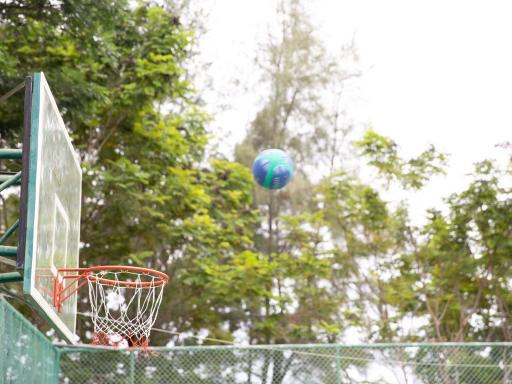The Power of Public Spaces: Empowering Communities Amid the Pandemic
A recent report explores the everyday and long term impacts public space has on surrounding communities.
A recent report explores the everyday and long term impacts public space has on surrounding communities.

A recent report commissioned by the John S. and James L. Knight Foundation explores the everyday and long term impacts public space has on surrounding communities and highlights the importance of public spaces for community development.
The study explores the impact of public spaces and how responsiveness to community needs throughout the design of the spaces actually laid “the groundwork for more equitable outcomes and greater resilience during the pandemic.”
The Knight Foundation commissioned Gehl, a global urban planning, design and strategy firm, to conduct an impact assessment of seven public spaces in its portfolio in Akron, Detroit, Philadelphia and San Jose.
In Detroit, the study highlighted two public spaces, Ella Fitzgerald Park and The Riverfront.
According to the report, these public spaces provided equitable access to communities and helped them weather the pandemic.
While stay-at-home orders and distancing measures were put in place, residents continued to seek out public outdoor spaces.
The study found that respondents that were surveyed reported visiting the parks more frequently than residents near other sites during the pandemic. Approximately 58% of Ella Fitzgerald Park respondents said they visit the park as often as or more frequently than before.
Pre-pandemic these Detroit public spaces were supporting community development in an inclusive and community-centered way which set the stage for community members to engage and enjoy these spaces safely in the pandemic. The report provides insights into the design and functions of these public spaces pre-pandemic to highlight opportunities for future community spaces.
Ella Fitzgerald Park
In 2018, Ella Fitzgerald Park was transformed from 26 vacant lots into a neighborhood park that now provides a venue for community art and recreational space as well as workforce development programs.
The park reflects local character through mosaics and graphics, in addition to popular draws like a basketball court and play area.
According to the report, workforce development programs helped to sustain site maintenance and offered job pathways for residents. For example, Ella Fitzgerald Park partnered with Greening of Detroit, a local organization that hires workers with barriers to employment, such as criminal records or lack of transportation. The partnership has provided career pathways to 20 Fitzgerald neighborhood residents to date with a 90% job placement rate.
The partnership also has a youth program that helps high school students secure scholarships to attend historically Black colleges to study forestry. The program also connects students with internships which leads to permanent job placements.
According to the report, Fitzgerald Park received funding from Reimagining the Civic Commons, a funder collaborative made up of several foundations including two CMF members, The Knight Foundation and The Kresge Foundation.
Among respondents to the survey for this impact assessment, when asked if they could live anywhere they wanted, 60% of Ella Fitzgerald Park respondents would choose to stay.
The Detroit Riverfront
The Detroit Riverfront was once an aging industrial area and is now integrated with art and local businesses. Adapting existing infrastructure drove residents to visit spaces in new ways.
The integration of arts and creativity in the design of the space led to diverse resident engagement, with this approachability showing up online.
The report shares that the reimagined site attracts more regional visitors than any other project studied, according to survey data and analysis of social media content at the site.
According to the study, The Detroit Riverfront Conservancy has a Community Advisory Team (CAT) that helps inform programming and improvements to the site.
Funding commitments from Knight and other funders helped many of these projects absorb risk and build the buy-in and legitimacy needed to secure other funding sources.
The Knight Foundation and The Kresge Foundation, each invested in Detroit Riverfront's Freight Yard. The Knight Foundation was an early investor in the Detroit Riverfront, and their recent investment came with over $900,000 in co-funding from other sources.
Another CMF member has invested in the riverfront. The Ralph C. Wilson, Jr. Foundation announced a $100 million grant to the Detroit Riverfront Conservancy for a new park and network of trails. Of that, $40 million will be used to develop the west riverfront park, which is expected to be completed in 2022 and named the Ralph C. Wilson Centennial Park.
The report highlights five key areas that local leaders and philanthropy can consider in future community spaces:
• Challenges related to physical connectivity: Improve access to the spaces.
• Challenges around inclusion and trust among communities of color: Expand support of local organizations and fund ongoing community participation efforts.
• Manage resident concerns about displacement: Changes to a public space can generate fear around issues like housing security, improvements should be resident-centered and planning efforts should be community based.
• Create sustainable operating models, diversify revenue sources: The report shares funders might play both a convening and a funding role — bringing stakeholders together to explore how public spaces can generate sustainable revenue.
• Create opportunities for cross-project knowledge exchange: According to the report, each grantee shared how valuable it was to discuss common challenges and generate new ideas with other public space leaders.
According to the report, these findings are a call to action for policymakers and funders. By elevating public spaces, leaders nationwide can drive more equitable outcomes in the pandemic and beyond.
The report shares, “these lessons emphasize the importance of engaging, reflecting, and empowering communities throughout the lifecycle of a public space — from design to programming to operations.”
Want more?
Read the full study.